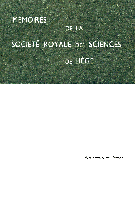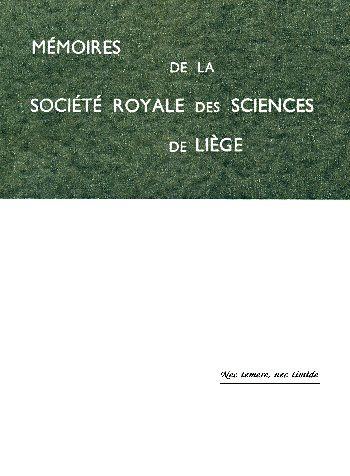- Portada
- Cinquième série
- Tome XVIII - 1969
- Fascicule 3
- FREE RADICALS IN ASTROPHYSICS
Vista(s): 1214 (3 ULiège)
Descargar(s): 643 (1 ULiège)
FREE RADICALS IN ASTROPHYSICS
Report presented at the Ninth International Conference on Free Radicals (Banff, Canada, August 25-29, 1969). This report was prepared and published as a cordial hommage to Dr. G. Herzberg, on the occasion of his 65th-anniversary.

Abstract
The present review covers mainly results obtained during the last twelve years.
In 1958 I published in the Handbuch der Physik a general exposition on the role played by molecules in stars and, of course, this included the free radicals. I refer to this general text for details on stellar work prior to 1958. The main topics included in this Handbuch article were the following :
(1) Presence of radicals (in the gaseous phase) in the atmosphres of the earth, sun, planets, comets, stars and interstellar space. Is there a local thermodynamic equilibrium (LTE) or not ?
(2) Information on vibrational and rotational temperatures, chemical compositions, densities, isotopes, physical processes.
(3) Di- and tri-atomic radicals in stars.
(4) The Sun a typical G2V-star; its photosphere, spots and chromosphere ; need for further laboratory measurements ('s and probabilities) and high resolution scans.
(5) Importance of bands for spectral classification (spectral classes and absolute magnitudes) ; normal stars ; populations I and II ; stars poor (or rich) in H.
(6) Molecules in M-; S-·and C stars.
(7) Molecules in variable stars.
(8) Molecular emission mechanisms in stars (especially AlO, AlH and CN).
(9) Continuous opacity of molecules.
In the course of the last few years several important reviews have been devoted to the spectra of comets. Hence I shall simply summarize briefly the work in the field of cometary physics.
On the other hand I shall give some detail on a few recent spectacular results, especially those on the role of the hydroxyl radical in interstellar physics. Quite a few puzzles remain outstanding in this domain.
Para citar este artículo
Acerca de: P. SWINGS
Institut d'Astrophysique, Liège, Belgium






